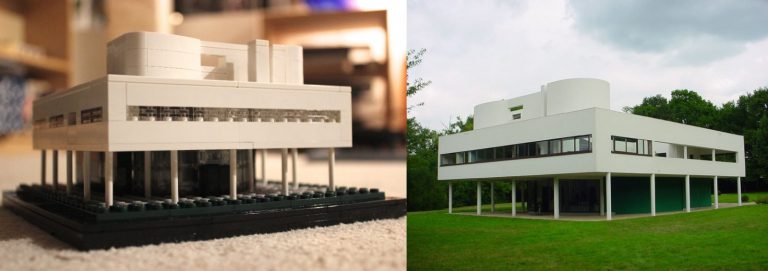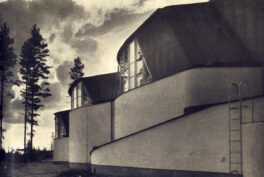Lego gives us the opportunity to create our own world. We’ve all played as kids creating the most amazing places from our imagination or even to recreate our favorite movies sets. Then, when you grow up, as an architecture lover (or even as an architect), those iconic Lego pieces give us the chance to recreate our favorite buildings from architectural history.
Most of us are using the time that quarantine has given us to explore or rediscover some of our hobbies. While here at DailyArt Magazine we are trying our best to express our passion for art and architecture in words, some others are recreating iconic buildings out of Lego bricks. From Art Deco to Brutalism to Neoclassical reproductions, here we are going to look at a few examples by famous modern architects.
LEGO’s Architecture Collection
Lego Architecture is a product by Lego which gives one the opportunity to purchase sets that contain the bricks and instructions to build a model of a famous architectural building in micro-scale. Of course, this collection contains some of the most memorable buildings of the 20th century.
Le Corbusier – Villa Savoye
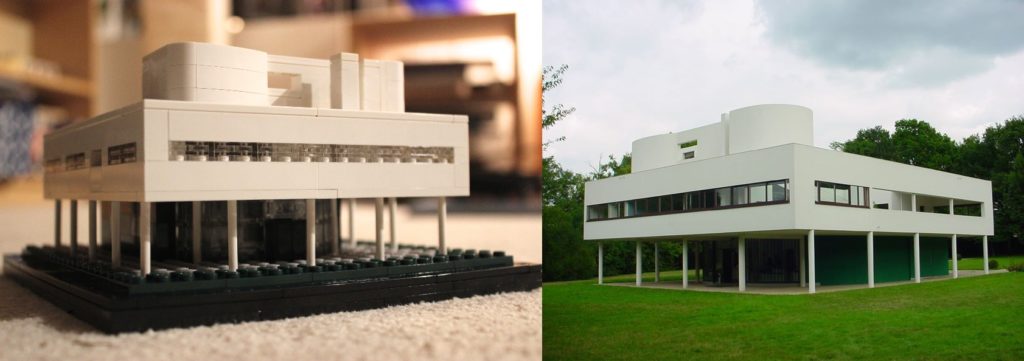
Le Corbusier, Villa Savoye, 1928-1931, Poissy, Paris, France. Wikipedia.
You can recreate your very own Villa Savoye, which is the perfect embodiment of Le Corbusier’s Five Points of Architecture. This is an interpretation designed by Michael Hepp in collaboration with the Lego design team.
Frank Lloyd Wright – Solomon R. Guggenheim Museum
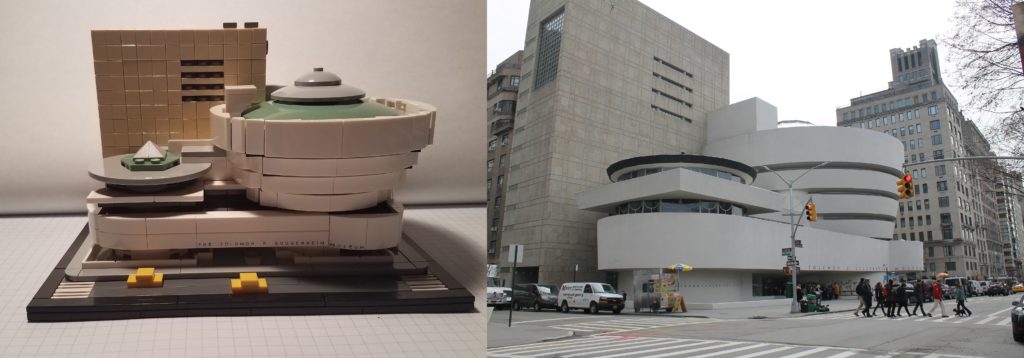
Frank Lloyd Wright, Solomon R. Guggenheim Museum, New York City, USA, 1959. Wikipedia.
With this design you can even recreate the organic curves of the Guggenheim Museum, the last great project build by Frank Lloyd Wright. By the way, did you know that Frank Lloyd Wright wanted the museum’s exterior to be made of red marble?
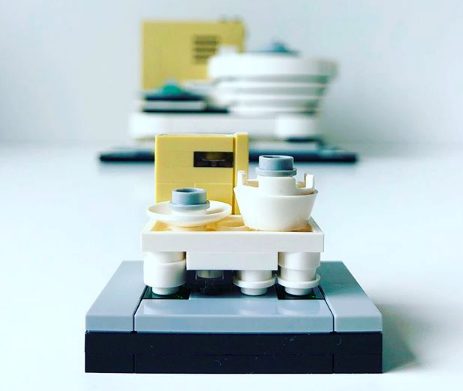
This is not part of the Lego Architecture collection, but is the Guggenheim pocket edition by Jet Kwan. His nano Lego recreations are the fastest way to start creating your own Lego versions. It’s incredible to see how the facade’s essence can be captured in so few Lego pieces.
Frank Lloyd Wright – Fallingwater
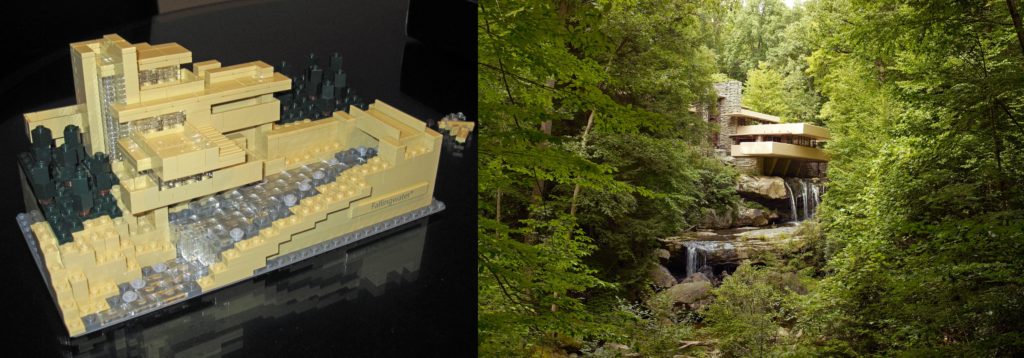
Frank Lloyd Wright, Fallingwater, 1936–1939, Mill Run, PA, USA. Wikipedia.
One can enjoy building Frank Lloyd Wright’s Fallingwater without the expensive maintenance costs and the constant sound of the water. This design recreates the exterior of the house. Its iconic design imposes a horizontality that stands out thanks to the bricks and cantilevers. The windows of the facade also have a special design, they open at the corners, breaking with the box of the house and incorporating the extraordinary exterior landscape.
Ludwig Mies van der Rohe – Farnsworth House

Ludwig Mies van der Rohe, Farnsworth House, 1945-1951, Plano, IL, USA. Image source: Wikipedia.
The Farnsworth House is a single-family home built of glass and steel in Illinois. It was designed and built by Ludwig Mies van der Rohe between 1946 and 1951. The project represents the rationalist style as well as Mies van der Rohe’s love for architectural simplicity and perfection in construction details.
LEGO Architects
On the other hand, one could also just purchase the right colored Lego pieces and a ton of white ones to create the next amazing recreations. Remember, you don’t need to apply for a construction permit.
Walter Gropius – Masters’ Houses
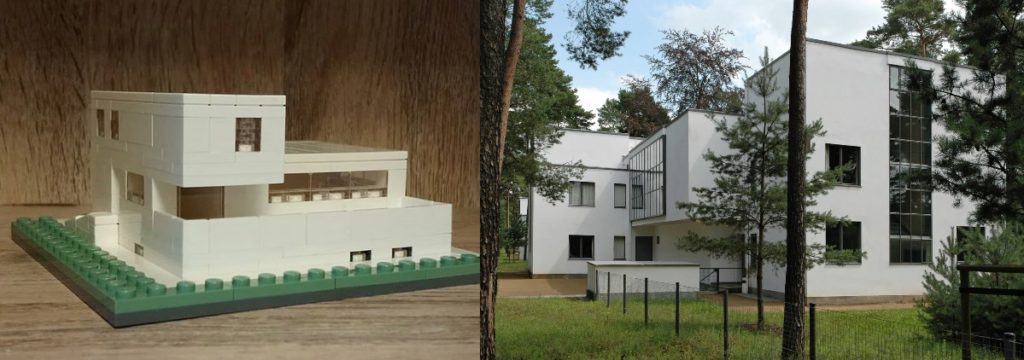
Walter Gropius, Masters’ Houses, 1925-1926, Dessau, Germany. Wikimedia Commons.
The Modernist, it’s a magazine, gallery and shop focusing on 20th century Modernist Architecture and design from the North of England. Together with the Lego designer Tony Bolton, they have created blueprints for many famous Modernist buildings.
Dessau commissioned Walter Gropius to construct three pairs of identical semi-detached houses for Bauhaus masters and a detached house for its director. The complex was built using industrially prefabricated components, based on a modular principle recreated here with Lego pieces.
Le Corbusier – Unité d’Habitation

Le Corbusier, Unite d’Habitation, Marseille, France. Wikipedia.
Here, Tony Bolton recreates another iconic Modernist building: the Unité d’Habitation in Marseille. It was designed by Le Corbusier and built between 1947 and 1952. Most importantly, this work synthesizes the experimental work by Le Corbusier from 1920 onward. Nevertheless, it is known as his most significant contribution to the typology of collective housing. Le Corbusier examined people’s lives 24/7 to ensure that all the aspects that compose it fit together. This was the first, of the five Unités d’Habitation built by Le Corbusier. Also in 2016 it was designated as a UNESCO World Heritage Site.
Le Corbusier – Maison Citrohan
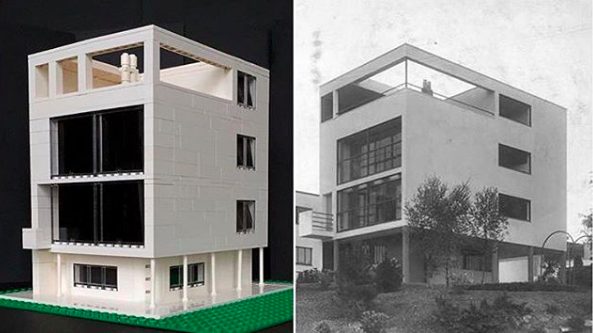
Le Corbusier, Maison Citrohan, 1927, Weissenhof, Stuttgart, Germany. Askan’s Bricks.
The Lego architect Askan brought the Maison Citrohan to the Lego scale. Le Corbusier designed this house in 1920. It is an individual housing unit that can be mass-produced. As we have seen in previous projects, Le Corbusier investigated new forms of housing: a logical and affordable house for everyone.
Le Corbusier and Pierre Jeanneret – House at Weissenhof Estate
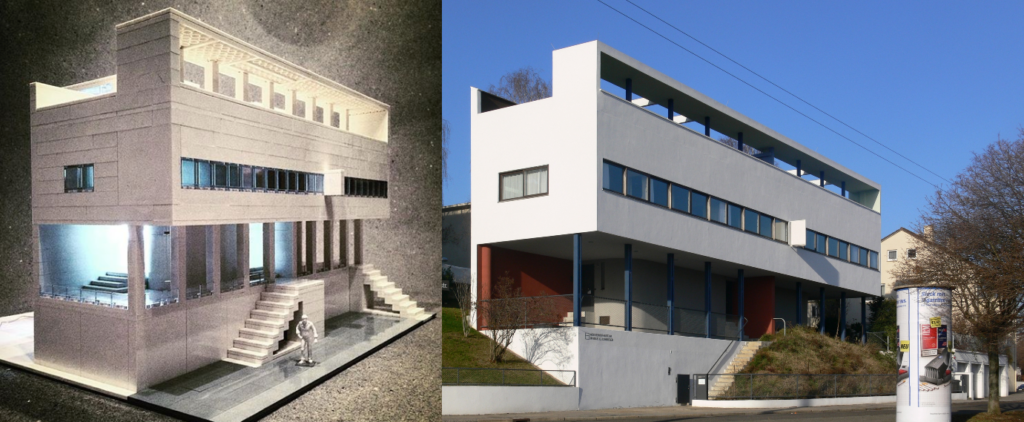
Le Corbusier and Pierre Jeanneret, House at Weissenhof Estate, 1927, Stuttgart, Germany. Wikimedia Commons.
The Weissenhof Estate in Stuttgart was a part of a Modernist housing exhibition in 1927 and is one of the most important architectural monuments of Classic Modernism. Le Corbusier and Jeanneret designed a two-family home and many of the Five Points on Architecture already mentioned can be observed. Unfortunately, many of the buildings were demolished during the Second World War. Today the building is known as the Weissenhof Museum im Haus Le Corbusier and has also been added to UNESCO’s World Heritage List.
Gerrit Rietveld – Rietveld Schröder House
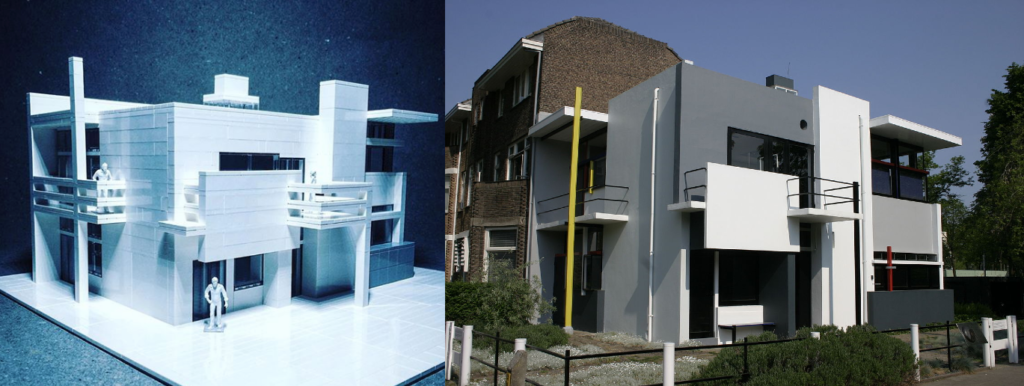
Gerrit Rietveld, Rietveld Schröder House, 1924, Utrecht, Netherlands. Wikipedia.
The architect Gerrit Rietveld built this house in 1924 and it is one of the masterpieces of the De Stijl movement of the early 20th century. Truus Schröder-Schrader commissioned the house to live in with his family and his main requirement was a design without walls.
Adolf Loos and Karel Lhota – Villa Winternitz
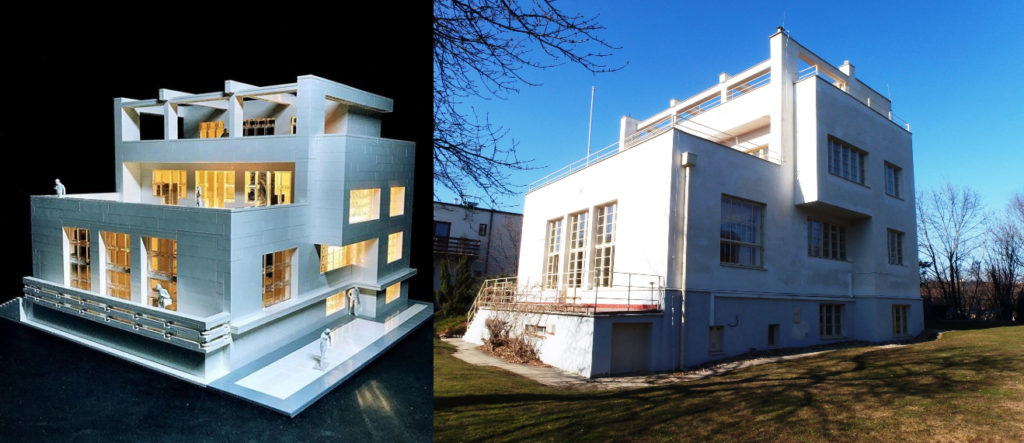
Adolf Loos, Villa Winternitz, Prague, Czech Republic. Wikipedia.
The Villa Winternitz was commissioned by the Prague lawyer Dr. Josef Winternitz for his wife Jenny, his daughter, and his son. Designed by Adolf Loos and Karel Lhota, it was built in 1932. Unlike other famous buildings by Adolf Loos, the Villa Winternitz’s interior is not defined by expensive materials. Nevertheless, Loos arranged the space in the so-called Raumplan like in the Müller Villa. The Raumplan consists of distributing the rooms at different heights according to their function. Above all, this Lego design really emphasizes the impressive facade glass using the interior lights and a perfect reproduction of the massive windows.
In 1941, the Nazis forced the family to leave the house and they were deported to Theresienstadt and from there to Auschwitz. The family never returned to their home. Presently the villa is open to the public as a gallery.
Ludwig Mies van der Rohe – The Barcelona Pavilion
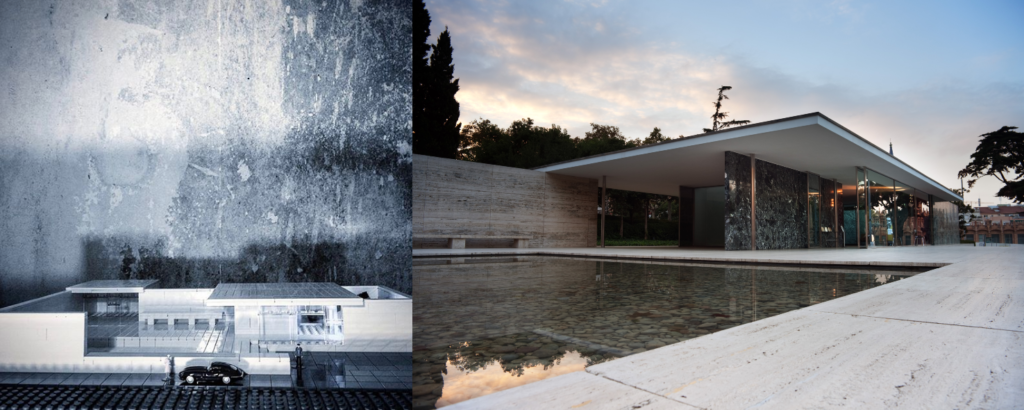
Ludwig Mies van der Rohe, The Barcelona Pavilion, 1929, Barcelona, Spain. Wikipedia.
In this case, Arndt Schlaudraff used Lego bricks to make an emblematic work of Modernism situated in Barcelona: The Barcelona Pavilion by Ludwig Mies van der Rohe. The pavilion was originally built for the 1929 Barcelona International Exhibition. After that it was disassembled in 1930 but the city council decided to rebuild it in 1983. Finally, the pavilion opened again in its original place in 1986. Even if the Lego version is made with white and transparent pieces, the background of the picture reminds us of one of the three materials used for its construction: glass, steel, and four different kinds of stone.
Ludwig Mies van der Rohe – Neue Nationalgalerie

Ludwig Mies van der Rohe, Neue Nationalgalerie, 1965-1968, Berlin, Germany. Wikipedia.
Let’s finish with one more van der Rohe building. This Lego recreation by Tony Bolton is the Neue Nationalgalerie, a building in Berlin. It is a museum of modern art that opened its doors in 1968. In this building there is a difference in street level thanks to a stone plinth that holds a “box” made by steel and glass.
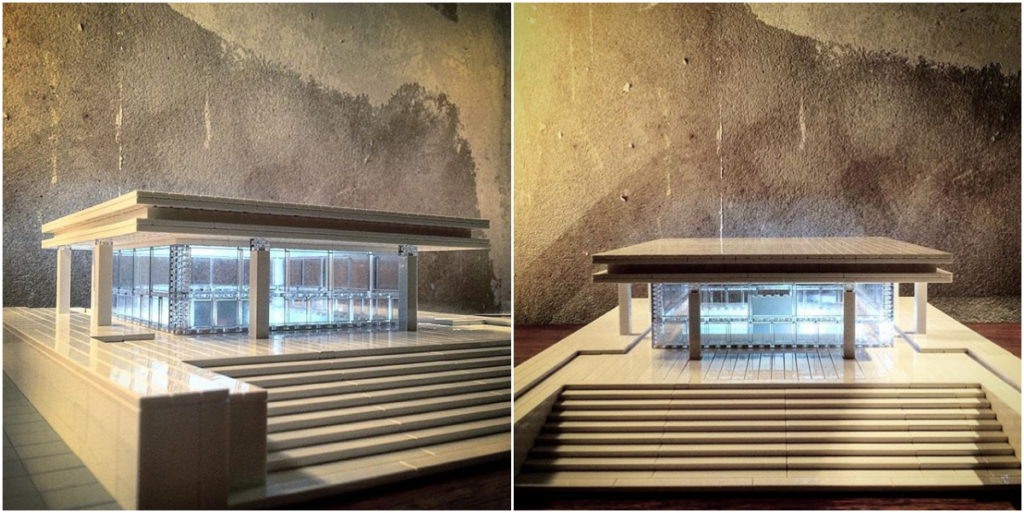
Arndt Schlaudraff offers another version of this building, using led lights in the interior, emphasizing the beauty of the glass structure that is supported by the straight structure. In this design, he further elevates the Nationalgalerie and chooses to recreate it only with whites bricks.
LEGO Repair
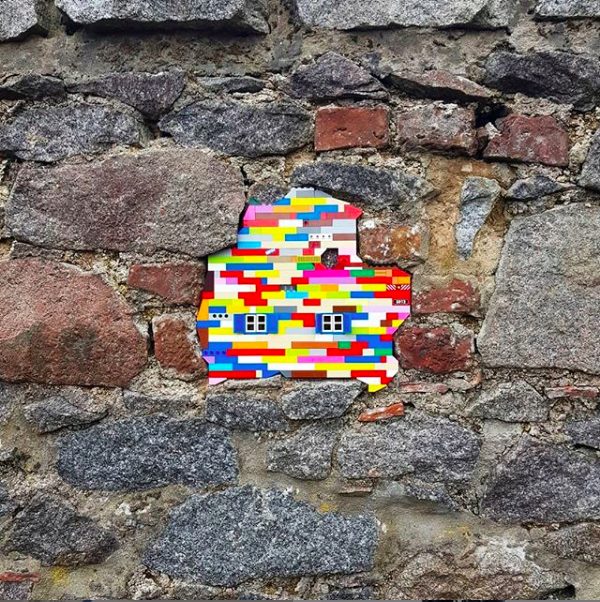
In conclusion, the possibilities with Lego bricks are infinite, going from Modernist recreations to this incredible project. Dispatchwork is a multiplayer game where artists fill in empty spaces in buildings around the world with Lego pieces. They surprise us with childhood colors in public spaces, acting like infiltrators in cultural heritage. On the project’s website, you can find an interactive gold map with all their interventions.
Resources
- The LEGO Architect, by Tom Alphin. This book contains 12 models that explore architecture with Lego.
- Tony Bolton’s blueprints. Here you can find the blureprints by this Lego architect to construct them yourself.
- 8 Steps to Building the Perfect LEGO Architecture Model
Read more about architecture in:
